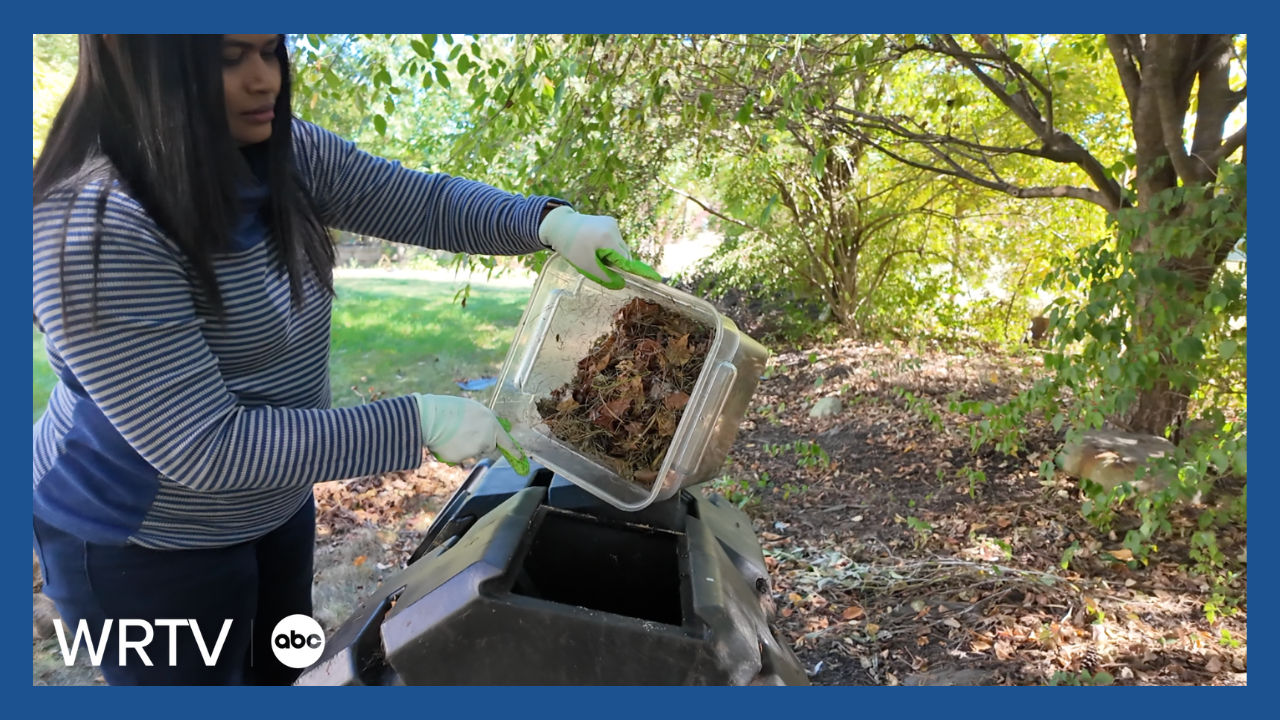INDIANAPOLIS — Leaves will soon be covering the ground across Central Indiana. What should you do with the leaves if you want to be sustainable?
I reached out to the Indianapolis Office of Sustainability.

"Traditionally, it's just been common practice to rake them up, and put them in bags and have them picked up at the curb," explained Lindsay Trameri, the office's project manager. "Folks are interested in more circular options that can benefit their garden, or their neighbors' gardens, and the environment as well," Trameri continued.
Trameri broke down some of these sustainable options.
"You can number one just leave the leaves in place. You don't have to rake them or do anything with them," Trameri continued.
Trameri commented on the fact that leaves are not raked in any Indianapolis parks, and the environment takes care of them.

If you're still mowing your grass this fall, that can also take care of the leaves.
"They can set the mower height to about three inches, and just mow right over the leaves, and that'll break them up a bit," Trameri continued.
You can then mix those broken-down leaves into the soil, and they will decompose over winter.
Composting is another option for your leaves. There are curbside compost collection companies that will pick up your items to be composted.
There are also locations where you can take leaves and yard waste to be donated.
You can read more about pick up and drop off compost locations here on the Office of Sustainability website.
Another option is to compost leaves at home.
To learn about this, I visited Gowri Somasundaram.
Somasundaram has been composting at home for nearly a decade. In February 2025, she founded the Indiana Composting Council.
"This is how we get started in the fall," Somasundaram said while raking a pile of leaves.
The leaves will be combined with other organics — food scraps and grass clippings — before ultimately being added into her compost tumbler.

Organic materials are split into two categories for compost: the greens and the browns.
Greens include all food scraps, grass clippings, and, notably for this time of year, pumpkins.
Browns include leaves, twigs and bark, pinecones, and other dead vegetation.

Composting is like following a recipe: mix one container of green compost materials with three containers of brown compost materials. Add a little bit of water, and it is ready to go into the backyard tumbler.

The nitrogen from the organic materials will combine with oxygen from the spinning motion of the compost bin to allow the items inside to decompose.
"Rotate it multiple times, and then finally, you're done," Somasundaram said with a smile. "After a month or so, you will get a good harvested compost."
How does she use it? Much of it becomes part of her garden soil.
Somasundaram added that she liked the tumbler compost bin, because it is clean enough for her to keep in her backyard without upsetting her neighorhood's HOA.
If you'd like to learn more about composting, there is a community composting session being held at the Boone County Fairgrounds on October 23. You can read more about the session here.





